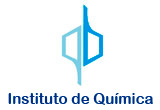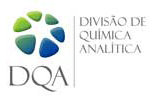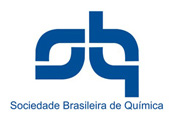| CONFERÊNCIAS PLENÁRIAS |
| |
|
 |
Reinhardt Niessner
Technical University Munich – Germany
"Laser Light or Antibody - Two Friends to Analysts" |
|
| |
|
Abstract
The lecture covers two means being advantageous in Analytical Chemistry: laser light and antibodies. Laser light is ideal when techniques are applied whose signal formation depends on light intensity. Known is fluorescence where the photons are the product of stimulated molecule excitation. Here, photo- or optoacoustic spectroscopy is shown as a technique allowing online and in situ observation of analytes. A first example given is the photoacoustic soot sensor.
Here diesel exhaust has to be observed and quantified due to its soot content during fasr transient test cycles. Photoacoustic spectroscopy with laser diodes exhibits an excellent wide dynamic working range, instantaneous response (< 1 sec), best sensitivity (< 10 mg EC/m3) an no interferences by other exhaust constituents (e.g. water vapour in the g-range or NO2 etc.). In a second example depth profiling of living tissues is demonstrated. Biofilms in water-pipes or walls of water reservoirs or sewage water plants host many microorganisms beneficial for decontamination or organic compounds (TOC/DOC). Usage of pulsed laser beams creates after light absorption (at the appropriate wavelength) an acoustical signal: a pressure wave.
Time-resolved observation enables the exact location of the absorber within the mm-range. The dynamic behavior of a biofilm, e.g. the efficacy of algicides can be tested by such an arrangement. In contrast to laser light, which makes use of its high photon density and monochromaticity to achieve sensitivity and selectivity, antibodies recognize the three-dimensional counterpart used for generating them.
Cooperative forces lead to high stability (affinity) constants, such yielding high selectivity and sensitivity, too. In a first example the development of a classical test format developed for the microcystin toxin detection in surface waters is shown. Algae blooming produces an enormous variety of toxins. Therefore, broadband antibodies are needed. The developed monoclonal antibodies recognize the common amino acid ADDA, which is part of all microcystin toxins, down to the lower ppt level. Chromatographists like to see all analytes within a sample. Hence, highly selective receptors, like antibodies, are not wanted there. On the other hand enrichment and/or cleanup steps are often encapsulated within a sol-gel matrix offer excellent features.
We demonstrate the advantageous usage of anti-PAH antibodies in combination with LC. Perfect separation of hydrovy metabolites of PAHs in urinary excretion is demonstrated. Finally the application of protein chip technology for fast antibody or antigen screening is shown. By spotting devices the requested counterpart is arranged at a glass surface in an unique manner. Injected into a FIA system the chip comes into contact with the aqueous matrix (sample). At each individual spot a competitive reaction takes place, finally quantified by chemiluminescence detection of the luminosity of the individual spots.
A CCD camera system observes the total chip surface at one glance. First successful examples are allergen blood screening or detection of antibiotics in milk samples. |
|










